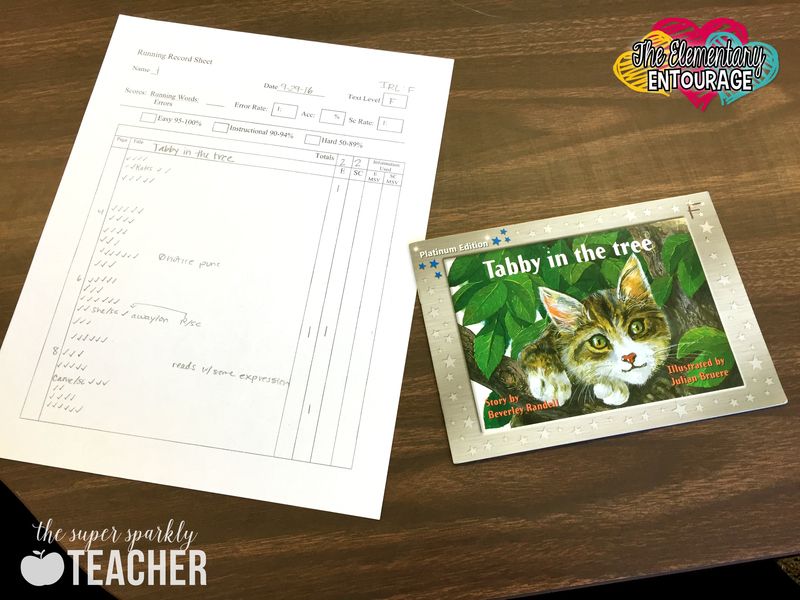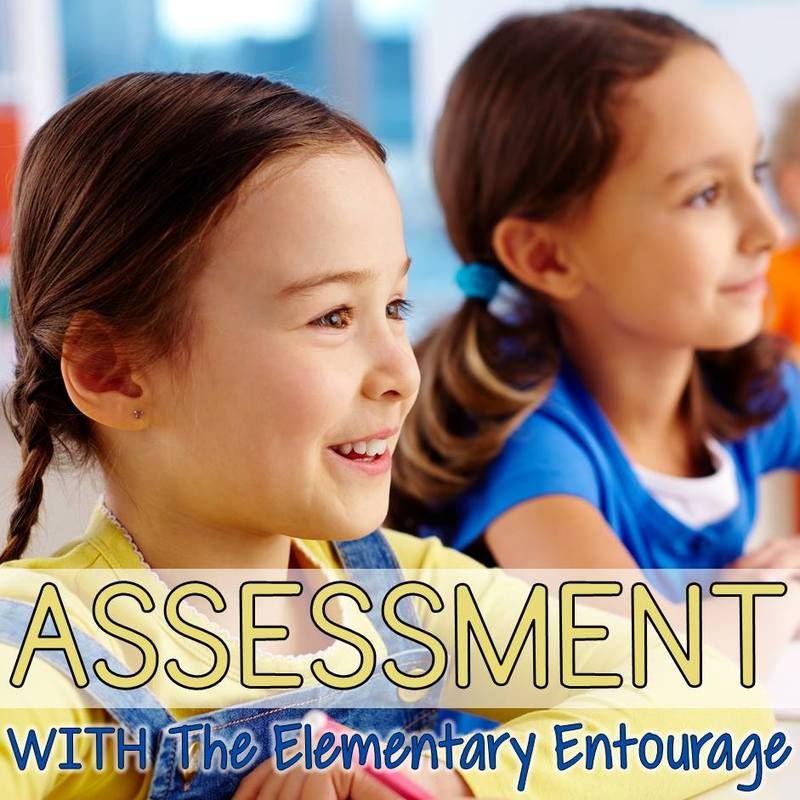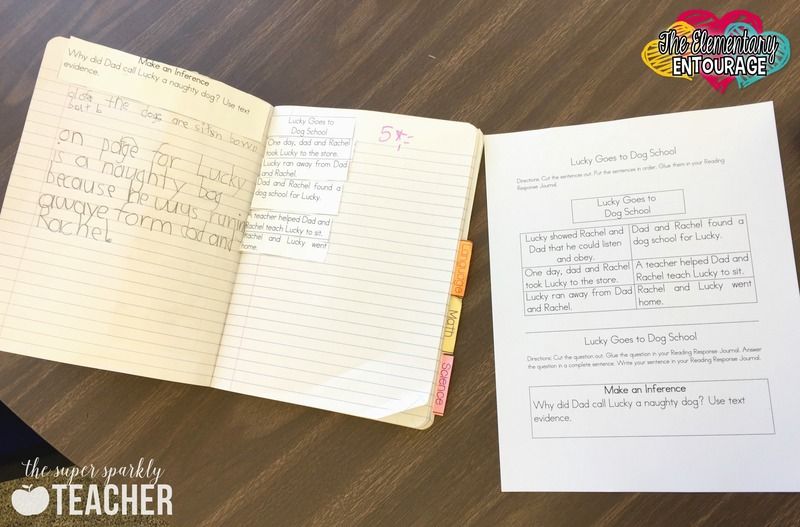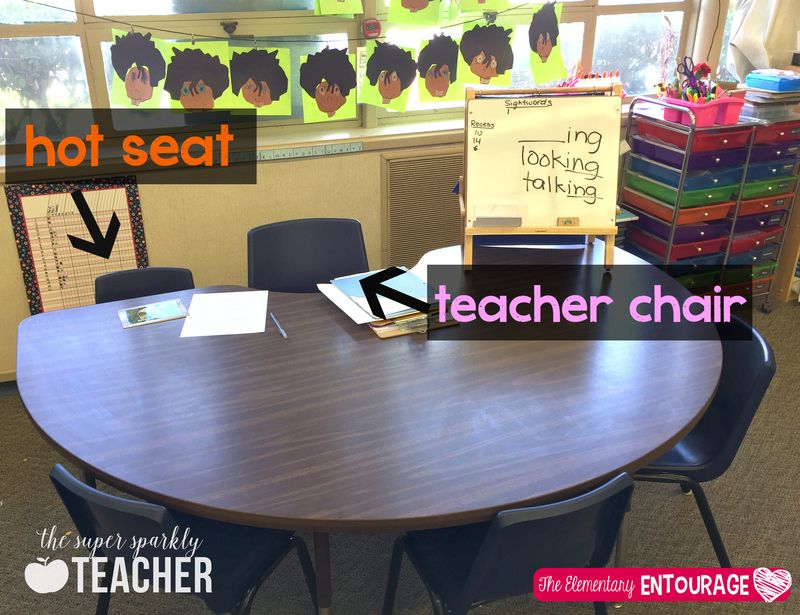What exactly IS assessment?
Assessment doesn't always mean a written exam. Assessment should be ongoing throughout every lesson. Simple checks for understanding using white boards, turn and talk, hands-on activities and quick writes.

Showing posts with label assessment. Show all posts
Showing posts with label assessment. Show all posts
Assess with Dress {with Mrs. Thompson's Treasures}
Assessing your students is a necessary part of teaching. Sometimes written tests are inevitable, whether state mandated or simply for you to get some grades for report cards. But in the day to day, assessing your students informally is a great way to keep a gauge on what the students have absorbed and what may need to be retaught.
I love using simple games to assess students. They are engaged and having fun, yet you are able to see who knows what. One of my favorite games is dress up. It will have your students laughing til it hurts! It is so versatile and can be used for any grade and subject. All you need is a box of dress up items (hats, scarves, funny glasses, etc.) and a list of questions.
When it is a student's turn, you ask them a question and if they get the answer correct, they get to choose a dress up item for you (or another student) to wear. If they get it wrong, they have to choose something to wear themselves. All items will be worn until the end of the game. You can do this game as a whole class, or in smaller groups so each student has a chance for more questions.
It's such a fun game to play, and students love being able to be silly with you!
Organizing Assessments and Evidence of Student Growth With Portfolios
Creating a strong student portfolio is an essential component of showing student growth and evidence of learning progress. The following is a collection of tips for creating a student portfolio that can be used first as a tool for parent teacher conferences, and then as a learning memory book at the end of the school year.
Setting Up Your Portfolios
Using legal-sized hanging file folders is the first step to creating an organized portfolio system. These slightly-larger file folders are perfect for filing special “Wall Worthy” projects that are often larger than 8.5”x11”. After you add name tabs to each hanging folder, organize them in alphabetical order by first or last name.
Next, add two legal-sized manila file folders to each student’s hanging file. One folder will be designated for portfolio items such as projects, writing pieces, reflections, and important assessments.
The second folder will be designated for forms such as confidential assessment data, parent surveys, student goal sheets, copies of IEP, SST, or 504 forms, and other student information sheets for teacher use.
Preparing Portfolios for Parent Teacher Conferences
In the months leading up to parent teacher conferences, begin to take notes on student goals, strengths, and areas of need. You can type these notes into a form divided into two sections: Way To Go and Ways To Grow. Organizing information in this way quickly shows parents a few things going well for their young learner (in the Way To Go category) and areas that need development (in the Ways To Grow category).
Next, collect evidence that can be woven into your conversations with parents at conferences. Providing them with visual evidence to support your commentary about their child’s progress makes these conversations more meaningful and easy to digest.
Transforming Portfolios Into Learning Memory Books
Before your parent-teacher conference ends, decide which portfolio items you will send home with parents and which items you will keep until the end of year.
Keeping all writing final drafts and art projects on hand and in chronological order is highly recommended. This allows you to easily host a learning celebration during which students can read through their best writing pieces, look back on all their artistic creations, reflect on their growth, and make plans for future learning. You are sure to feel a tingle in your teacher heart when the classroom fills with the sounds of flipping pages and tiny giggles as students look back on how far they’ve come since the first day of school.
Everything Is Ready For You
Informal Assessments {w/ The Super Sparkly Teacher}
Reading Responses
Oh, those informal assessments... Isn't it so hard to fit in? I am constantly assessing during guided reading in order to determine where my students are and to further support them as they build comprehension skills.
This year, my teammate came up with the idea of creating reading responses that correspond with the books our students are reading (Rigby Leveled Readers). We began writing 4-6 events from the story, which students then have to sort. After this, they have to answer a question and cite text evidence. We've started working on using the frame, "On page..." to cite picture or text evidence. We've been doing this for several weeks and I've definitely seen a major improvement in their ability to answer questions related to details in the text.
I can't believe I'd never thought to have my firsties extend their guided reading time in this manner. It's a great way for them to practice writing their responses. We often practiced this whole-class much later in the year.
 |
| Want the tabs? Click HERE to get them for FREE. |
The Hot Seat
Assessing students' reading behaviors and skills are important as well. I have a "hot seat" at my guided reading table, which allows me to informally assess students' reading skills on a weekly basis. The "hot seat" is right next to me and surprisingly students REALLY want to sit there.
Everyday I ask a different student to sit there in order to me to listen in as they read a familiar text. The rest of the students are also reading a familiar text, but I'll only complete a running record on the student sitting in the hot seat. This allows me to see if they're self-correcting, using context clues, etc. Sometimes I'll see a pattern within a group, like students neglecting inflectional endings. I can then address this the next time we meet or I'll pull a strategy group.
 |
| Click HERE for this running record form. |
Do you have any tips for assessing students during guided reading? We'd love to hear them!
SaveSave
SaveSave
SaveSave
Assessment Data with a FREEBIE from Dianna [Sassy, Savvy, Simple Teaching]
Most of us are currently wrapping up the first quarter of school or have already done so! Whoa, did it just fly by for me! My life has been a HUGE whirlwind over the past few months, full of changes, but I'm happy to be back here today with my Elementary Entourage family and our readers!
So, I have made a change in the assessment data I currently keep... I'm now back in the classroom in 5th Grade! I teach ELA to 50 lovely kiddos and feel so blessed to have had this opportunity at our neighborhood school that my child attends!
Anyhow, I've really had to get my data binder for 50 organized!!!!!!!!!!! What a task!!!!!!!!!! Changing my mindset from a Literacy Coach looking at school and grade level data to now looking at individual student data according to my personal instruction. Especially being in a new state [well, returning] that is slightly different than my previous state. But, the bottomline is no matter where you are, tracking data is essential to your instruction.
So here's what is currently in my Data Binder!
So here's what is currently in my Data Binder!
ELA Data Sheet:
I created this data sheet to help me get the "whole child" picture and to see the data progression throughout the school year.
This data sheet tracks the past two previous grades in the categories of: State Assessments, Reading Level, Reading Grade, FAIR, Writing Grade, RTI, etc... Those categories continue for this school year along with MobyMax.
FREE:
I created this in an editable document for FREE for everyone to use and adjust to your personal needs!
[Click below on any of the photos for direct links!]
[Click below on any of the photos for direct links!]
Standard Data Sheets:
The next thing I use is my Standard Data Sheets from my Grade Level Data Binder Products. These data sheets allow me to specifically focus on standards, which is my Core Tier 1 Instruction for all students. You can use these sheets in a variety of ways. I use them to look at mastery, assessment, etc... This also transfers into the small group instruction I use. I meet with groups on their instructional reading levels along with groups who need remediation in specific standards, skills and strategies.
Reading Level Growth Tracker:
I also track reading levels in my data binder. I use this Reading Level Growth Tracker for individual students and to look at my entire class. This helps me look at my class as a whole and my students individually when it comes to independent reading levels.
This form I use for each student to graph their progress throughout the school year:
These 2 forms I use to see my class as a whole:
I hope you find this post useful in some way, shape or form! As assessments continue to change in schools some things will always remain the same... Core Instruction [our standards] and reading levels!
As a Literacy Coach, I created this versatile Data Sheet for K-5! I am currently now using it myself.
I also track reading levels in my data binder. I use this Reading Level Growth Tracker for individual students and to look at my entire class. This helps me look at my class as a whole and my students individually when it comes to independent reading levels.
This form I use for each student to graph their progress throughout the school year:
These 2 forms I use to see my class as a whole:
These 2 forms I use after I track my data to help plan my small group instruction:
I hope you find this post useful in some way, shape or form! As assessments continue to change in schools some things will always remain the same... Core Instruction [our standards] and reading levels!
Assessment with The Learning Chambers
One thing that I do in my classroom is to informally assess my students throughout the week. It really helps me reflect and refine my teaching. I love teaching in small groups and I informally assess my students to help guide my instruction. It lets me know who needs reteaching and who is ready for enrichment. Here are a few ways that informally assess my students every week.
Informal Reading Assessments
I am constantly assessing my reading small groups to help guide my instruction. I love using reading passages to have my students respond to their reading. We read them closely and then I use comprehension questions to informally assess my students. I then use the data and my observations to plan for the next day's instruction.
My kids really enjoyed these spiders informational texts. You can grab my Tarantula informational text HERE for FREE and try them out with your students. The loved them so much and they had no idea that I was assessing their reading responses.
I also use informal math assessments to guide my math small groups. I love guided math and also math enrichment. This past couple of weeks we've been learning about angles, coordinates, and negative numbers.
I decided to use a STEM challenge and I also was able to use it to informally assess my students.
It was a great way for me to see who had mastered the concept of angles and also who needed to be retaught in a small group.
Want to hear more about my ozobot challenge? You can check out my blog post HERE.
Assessments { with Stephany from Primary Possibilities }
I give quick and simple assessments to my students before, during, and after instruction. The format and types of questions are the same that my data is consistent. They numbers within the problems are different.
You can grab up the Common Core Assessments above by clicking on these links:
Once I have graded the assessments, I use these tracking forms to keep track of mastery. This helps me keep track of who needs retaught, how many times a student needs a standards retaught before mastery and who can move on to the next skill.
You can grab up these Common Core First Grade Math tracking sheets by clicking on the image below. Be sure to follow my store for more freebies and updates while you are over there!
Assessment {with Aloha to Second}
I assess my students several different ways. I keep a large 2 inch binder that I divide into sections for each student. I place all their assessments behind their section in the binder. This makes is so much easier for me when report cards come around. I can flip to their section and easily figure out how to fill out their report card.
I assess students in reading, writing, and math. Each unit I have an assessment that I give the students and I make a copy for me to place in the binder. I also send a copy home to parents.
One of my favorite assessments that tells me so much about each student are my monthly assessments. I quickly assess my students each week based off of our word study skills, a math skill, and another kindergarten skill. I highlight where they need to practice and place a checkmark next to those they complete correctly. If there is more information I want to remember, I write it in the notes section.
I may assess by having them fill out a quick exit slip, one-on-one questions, use a white board, or through classroom observations.
At the end of each month, I send a copy home to parents and they are asked to sign and return the bottom portion so I know they received it. I also jot down on a post it note skills I need to review with students based off the assessments. I then pull the students throughout the day or ask them when we're lining up for lunch to help them practice. If we have a parent volunteer, I also have students work with them on these skills.
I LOVE this. It holds me accountable, it makes report cards easier, and it helps me really know which students need more practice. I have found that my students have improved so much more since I've started this. If you would like a copy of what I use this school year, click here!
Enjoy! Thanks for stopping by. :] If you have any questions, feel free to ask.
Assessment w/Tickled Pink in Primary
Do you dread report card time? It can be very time consuming to pull each student back and give assessments. I have an assessment system that I use that I find helpful in organizing student work and checking their progress.
A few years
ago, our district implemented data dashboards. We have to have a bulletin board
graphing the progress of the class as a whole on certain skills. I decided to
also create individualized folders for students to track their own data as
well.
Instead of pulling students back all at
once in October for report cards, I work with students individually
periodically to see how they are progressing. Sometimes I work with them at center time so they don't even know I'm assessing them! One thing I love, is having all of a child’s
assessment data in 1 spot! This makes it very easy if a parent or administrator
has a question about how a kid is doing. I can also have my aide or parent
volunteer take the folder to see what skills that particular students needs to
work on.
For the cover of the folders, I use full
sheet labels that I got a Office Depot. I also found them on Amazon below. Of course, you can just glue them on too. I have
a variety of covers, so you can customize a folder to your student’s skin color
and hair color. :)
I have tracking sheets included in the
folder for things such as letters, beginning sounds, sight words, and numbers.
My Kindergarten Assessment & Data Folders set includes some flashcards
as well to use with these tracking sheets.
I use different colors of pens and
crayons to graph the results and show how students are progressing.
I think it is very important to let the
students color in the graph. This helps them take ownership and pride in their
work and progress.
The folder contains very basic
Kindergarten skills and doesn’t include every single thing I need for report
card time, but these are the basic skills I felt that I needed to test
verbally. I can use other worksheets to test number sense, math facts, etc.
therefore I didn’t include that in the folder.
The Dolch Primer sight words are the list I used
for this file since it is a common list. However, since
we all don’t
teach the same sight words, I created an editable file so you can edit the
sight word tracking sheet and the sight word flashcards.
I’m sure you have your own set of
assessment sheets for report card time, but hopefully giving you the idea of
creating individualized folders will help save you time by having everything
for each kid all in 1 place. If you're interested in my Data Dashboard folders, you can find them here. Do you have any tips/tricks for assessment time?
Subscribe to:
Posts (Atom)


















































